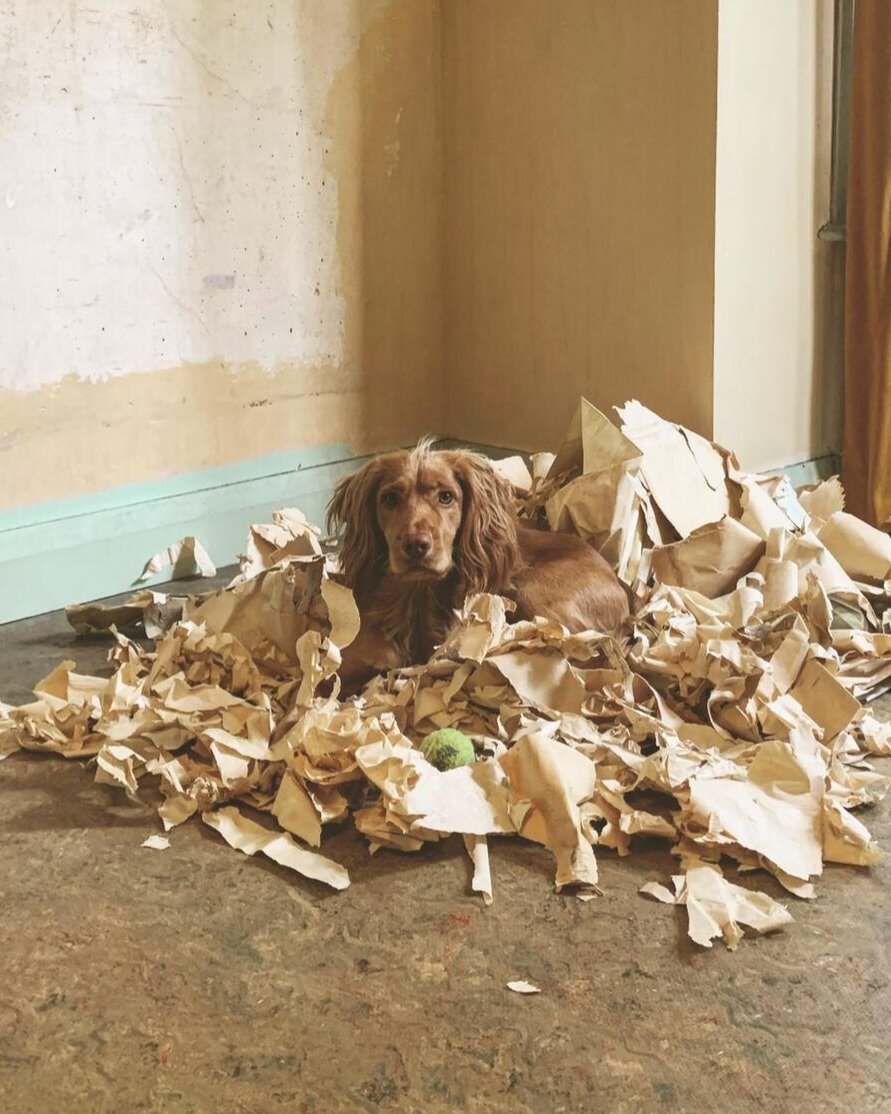HOW TO STOP YOUR DOG
FROM BITING/NIPPING & CHEWING
WHAT?
Puppies start teething around 3 months, this is normally done by 6 months and this could last up to 9 months. During this time they need to chew to relieve themselves of discomfort, so Puppy proof your house and provide chews! That being said teeth might be through by nine months but they are still setting in the jaw so chewing may continue through twelve months some are just chewers and herders are predisposed to nipping so you may find it worse and longer lasting in them.
Puppies also nip for attention / to insight play and will continue to do so if they learn this works. SO DON’T LET THEM LEARN IT WORKS! But also recognise they are bored and need more calm mental stimulation. For example Groundwork. PW: TDG1820
They also use their mouth to explore the world and learn the rules of dog culture, so be forgiving that learning not to do it with humans is not natural.
However it’s still really important that from day 1 we teach bite inhibition and that using teeth does not work and is not acceptable with humans.
1. Skim off excess energy and give attention for calm behaviour so your puppy doesn’t need to ask for play inappropriately. Puppy play dates, food puzzles and slow sniff walks.
2. Provide lots of chews e.g: Pigs Ears, Cow Hooves and Antlers (4 months +) Fresh raw meaty bones from 4-8 weeks.
3. Be sure not to reinforce biting with any attention. Be a tree. No eye contact. Once they stop you can praise them (calmly) and continue play. We want to teach them what TO do, not just what NOT to do.
4. Though ignoring does not always work, especially if the root cause is boredom and you have previously accidentally reinforced this behaviour as if some of the time you give attention and other times you do not it will get worse (see extinction burst below).
Therefore instead of ignoring you may need to redirect/ Reinforce alternative behaviours e.g
Sit, Watch me. These behaviours are then rewarded with treats on the ground and play. I.e we teach that watch me is how to solicit attention not nipping and biting.
Having practised this be sure to notice if your dog offers a sit-watch on their own and to reinforce that with play etc otherwise if nipping and biting is the only thing that gets their attention, then that is what they will do.
Dogs make an association only with something which has happened about 3 seconds before. Therefore if they nip and you redirect to other behaviours such as sit, watch me, stay; then so long as that alternative behaviour duration is more than about 3 seconds before you reward with a play or a chew, then you are reinforcing that alternative behaviour, not the nipping and biting.
It is possible for a dog to make a ‘chain’ eg nip bite, sit watch me equals treats so keep changing it up and making time elapse before the reward and where possible ignore the nipping behaviour and come back and give them what they need, eg attention, a chew, enrichment, 4 seconds after have stopped.
5. Manage the environment so they can’t continue to bite you. E.g you could have a harness and house line on them so you can manoeuvre them as you need without them nipping.
Spraying clothing with bitter apple anti-chew spray rarely works but you can add it to your toolkit and give it a go.
6. Build to greater time of them having to settle (see below) before allowed play.
7. If it’s all too much. TIME OUT (see below).
8. Please also teach Drop it and Leave it.
Soft Mouth
However, we don’t want to teach just don’t nip. We want to shape bite inhibition and a soft mouth. Essentially gums can go on humans but humans are too fragile for teeth.
Therefore you essentially want to set a point at which biting is too hard and that no reinforcement is received from. You then only reinforce with treats and attention any mouthing below that threshold. Over time you make a softer and softer mouth the requirements for reinforcement.
Exercise:
Take a low-value treat in your hand.
· Show it to your Pup.
· Close your hand.
· Your puppy will start mouthing, pawing at it. Give RM (Reward Mark) and release a treat for any acceptable behaviour. I.e a sit and look at you, or a lick or a gentle mouthing to begin but not a hard one.
Release treatment for correct behaviour.
· A hard nip looses, treat, attention for about 15 seconds until it’s time to try again.
· Repeat.
Time Out
You may feel you need to use a time out.
For this, say ‘TIME OUT’ at the point of behaviour and then immediately take your dog to the time out (TO) room. You must say the bridging cue and execute the time out instantly so your dog makes the connection with the unwanted behaviour. A continuous tone from point of behaviour to arrival in time out zone would also work well.
Do not pick your pup up or make eye contact as this could be reinforcing to the attention seeker.
Choose a boring room like a bathroom. You may want to tether them there. Don’t use your crate if you are trying to crate train as that should be a positive place.
Leave them for 30 seconds to 3 minutes.
If they whine, bark, scratch etc, you must wait until they are calm and quiet before ending TO or you will reinforce that behaviour. A bang on the other side of the door can help.
Repeat the process whenever the behaviour reoccurs.
Following TO bring your dog back to that location and ask them for a correct, incompatible behaviour which won’t result in TO. E.g On your mat, stay and they get treats love and attention.
Please note that TO is intended for persistent attention seeking behaviour. You should ensure your dog’s needs are first being met and do not use this for fear, anxiety and aggressive behaviours.
For mild attention seekers, turning away and looking up at the ceiling should be enough.
Settle with the tether
If you need to settle then teach it by tethering your pup to a very short line and harness to something rigid. You may want a chain lead or at least put anti-chew on your normal lead. The lead should be short enough so they can do nothing but lie down. Once they stop, whining and barking and relax, very quietly say, good settle but still ignore him, no eye contact. Once they’ve gone to sleep you can untie them.
Once they know ‘settle’ you can add more movement in around them whilst they settle and even up to kids running by during the settle if you are ready to practice a lot.
If they are continuing whining barking etc we need to build up to this gradually so I suggest booking a session.
Extinction Burst
Be aware of the extinction burst which is when the unwanted behaviour gets worse before it gets better during the onset of being ignored. So if they try to bite more initially stick with ignoring the unwanted behaviour and reinforcing calm behaviour.

